Bicycle rebuilds are not very technically challenging, but they are fun, so I figured I would document the processes and pictures here as I do them. I'm a big fan of old bicycles, particularly lugged steel frames from mountain biking boom (late '80s into the early '90s). I'm not a bicycle mechanic, nor have I ever been, so I don't claim that any of my methods are proper. But I enjoy taking them apart, learning how they work, and gaining an appreciation for all the different nuances of each model.
1991 Trek 1400
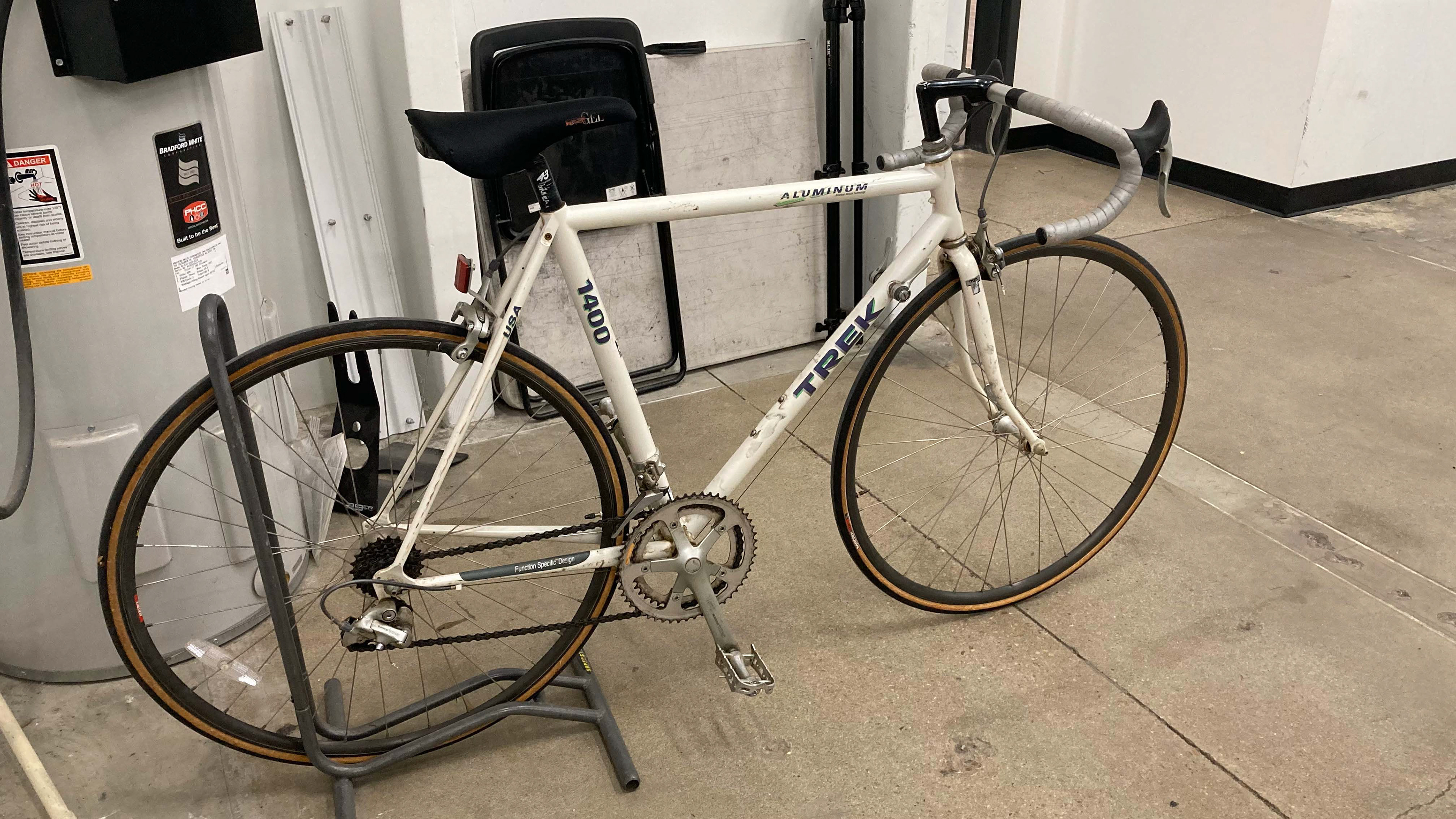
As-Purchased
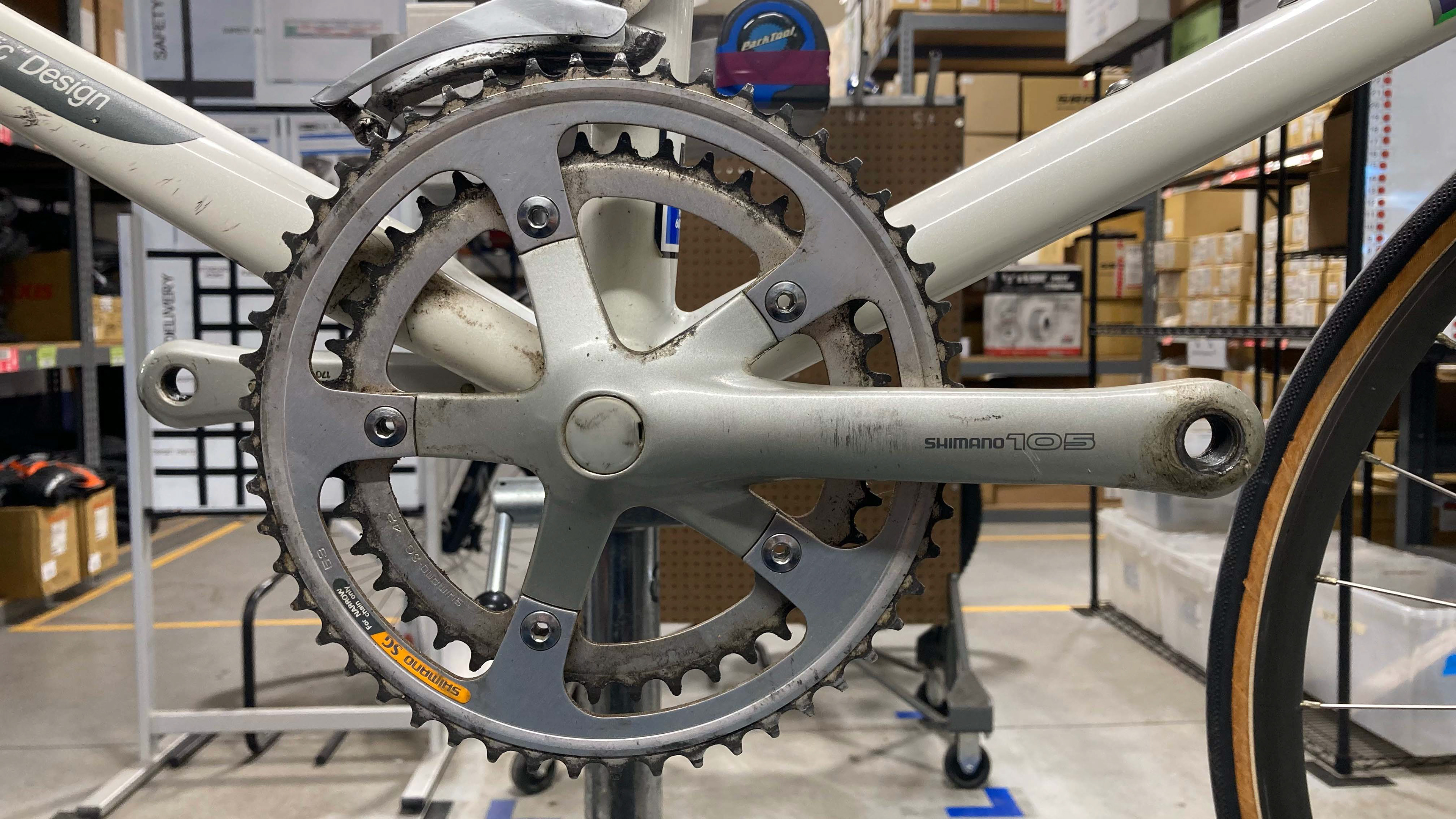
Front chainrings prior to cleaning
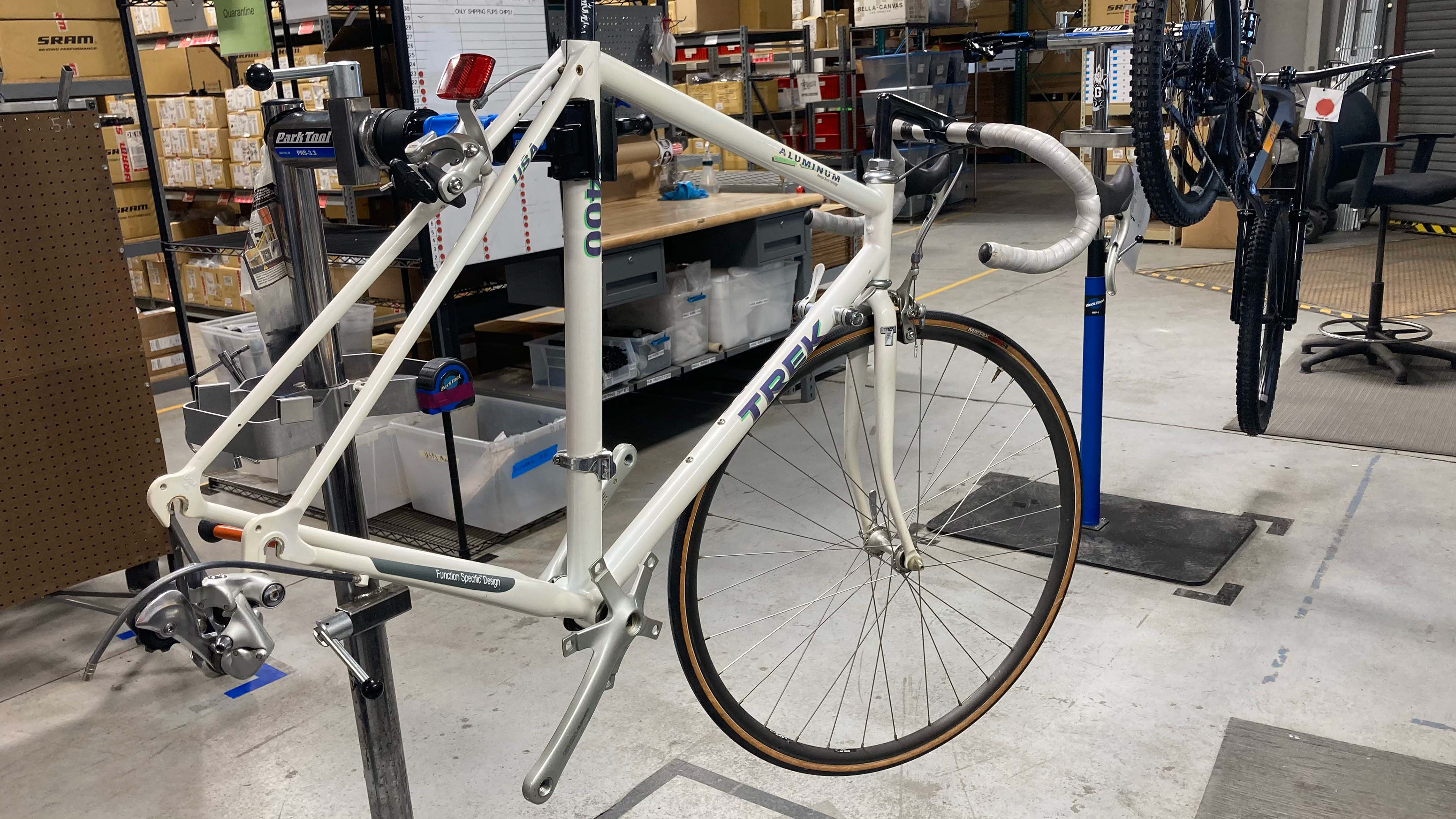
Stripped frame during cleaning
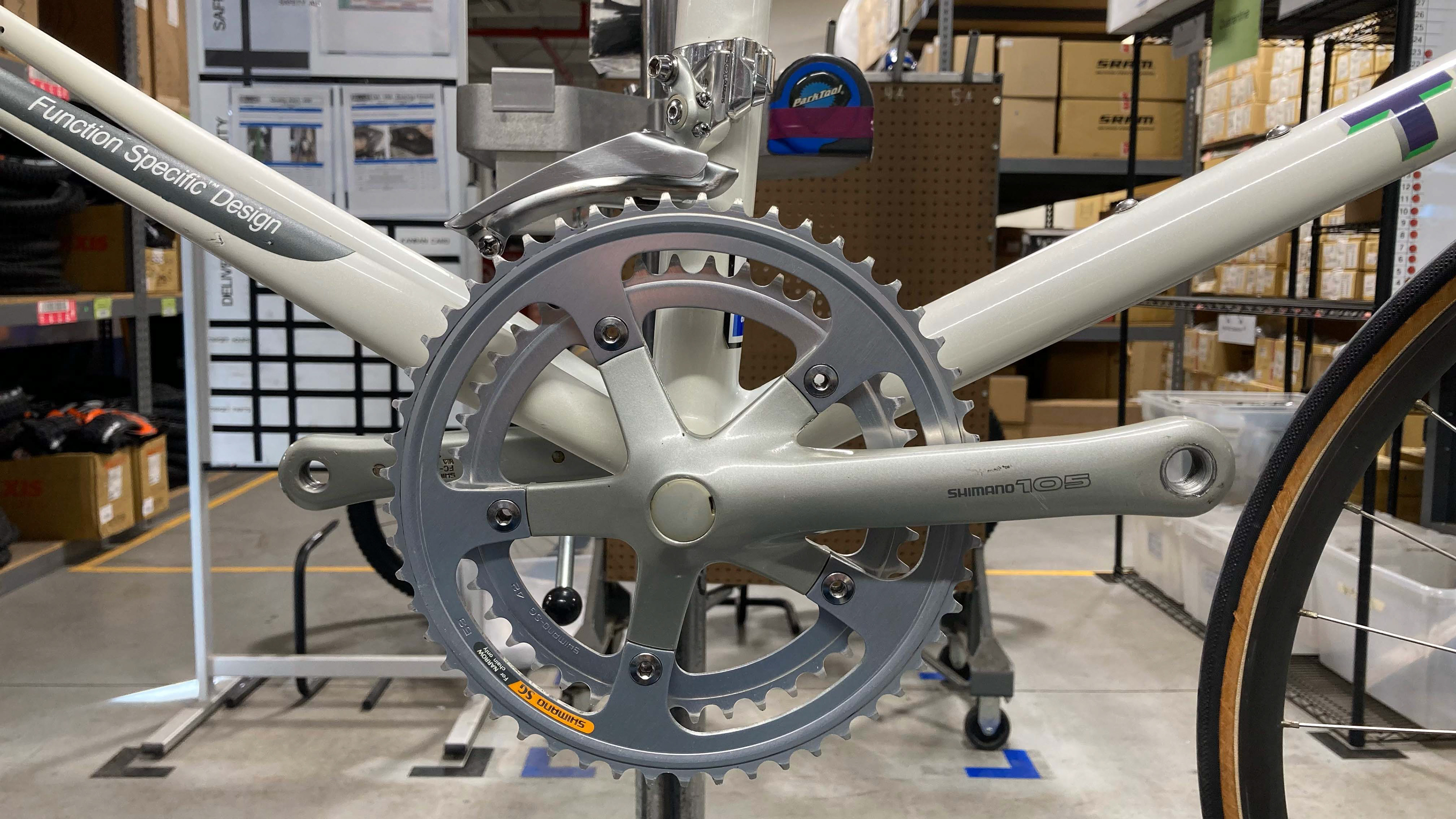
Front chainrings after cleaning
I found my Trek 1400 listed for sale in Denver in January 2023. The ad was minimal and contained only one picture, which was very grainy. I did a bit of research on the frame and found that it was made of bonded aluminum tubes, which was fairly experimental for the time, but a lot of reviews praised the technique for being surprisingly robust. After receiving some better pictures from the seller, I immediately fell in love with the unique liver: pearlescent white paint with purple decals on a silver/green background. The bike looked like it was in rough shape, but I decided to buy it anyway.
After picking it up, I discovered that the bike was likely completely original: it still had the full Shimano 105 groupset, gray/silver bar tape, Matrix wheels, and even Matrix-branded tires. Matrix was Trek's in-house brand of wheel components throughout the '90s until it was eventually replaced by Bontrager. Additionally, the majority of the markings on the frame seemed to be additive rub marks rather than scratches. By the looks of it, the bike was used as a commuter for many years without any major damage or parts replacements, but also not very many cleanings.
Given the state of the bike, I decided to start by fully tearing down the drivetrain. Every piece was removed and diligently cleaned to remove over 30 years of grime. The derailleur was disassembled, cleaned, greased, and reassembled. The brake calipers were removed so that the frame could be fully cleaned using a strong degreaser. After several hours of scrubbing, the paint looked nearly new - the only cosmetic issues were a couple of small scratches and a small dent in the top tube. The drivetrain was reassembled, and I ran new stainless steel shifter cables through. The wheels were slightly untrue and off-center, so I mounted them on a truing stand and brought them as close to nominal without dedicating my life to the art. Although I appreciate original components, the bar tape was compressed to a state that was uncomfortable, and the tires were dry-rotted to an extent that was unsafe.
I wanted to keep the bike looking mostly original, but make it pop a bit with more modern attributes. The original tires were replaced with Panaracer Paselas to maintain the gumwall look. In order to accent the unique paintjob, I added green bottle cages and rewrapped the bars with purple bar tape.
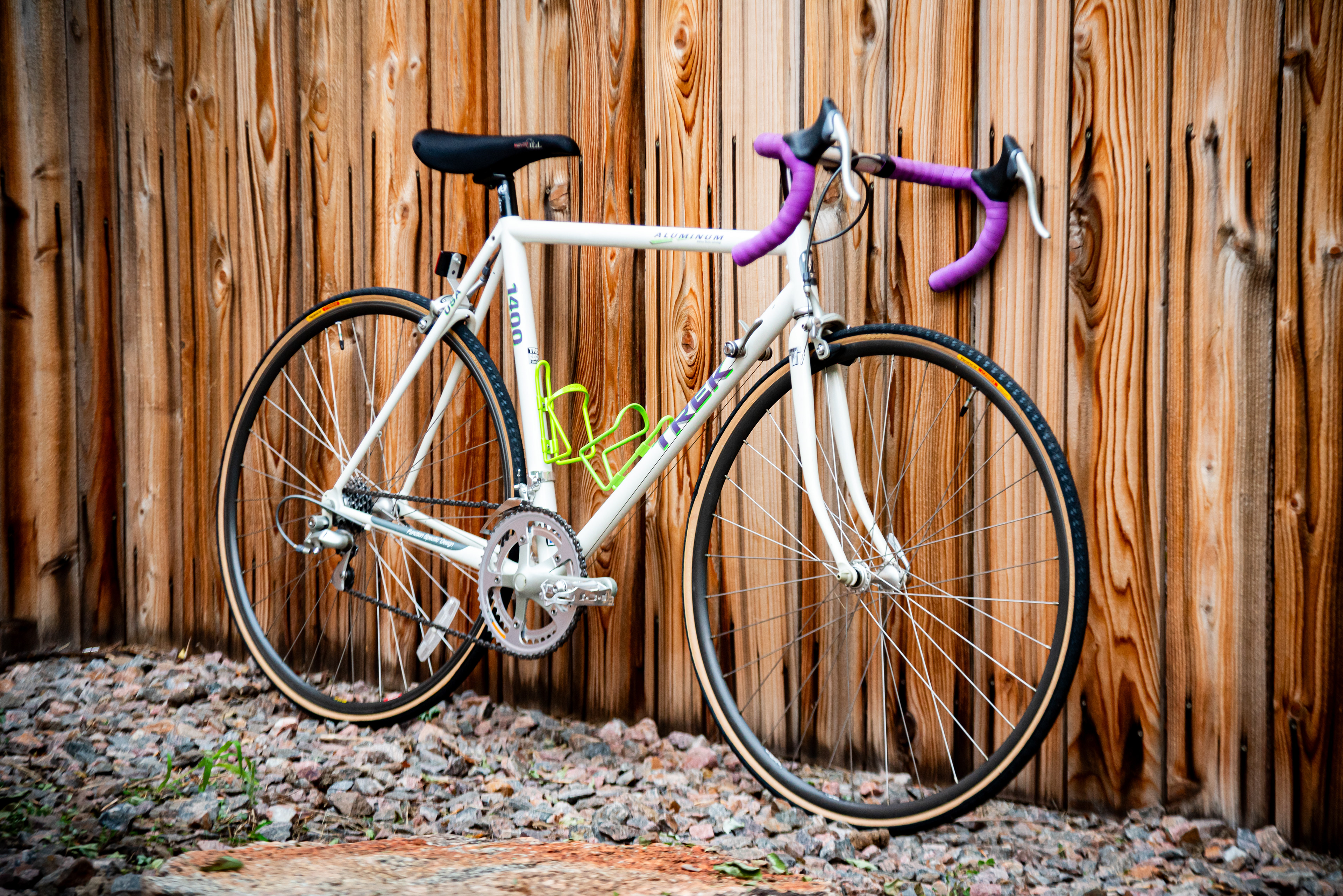

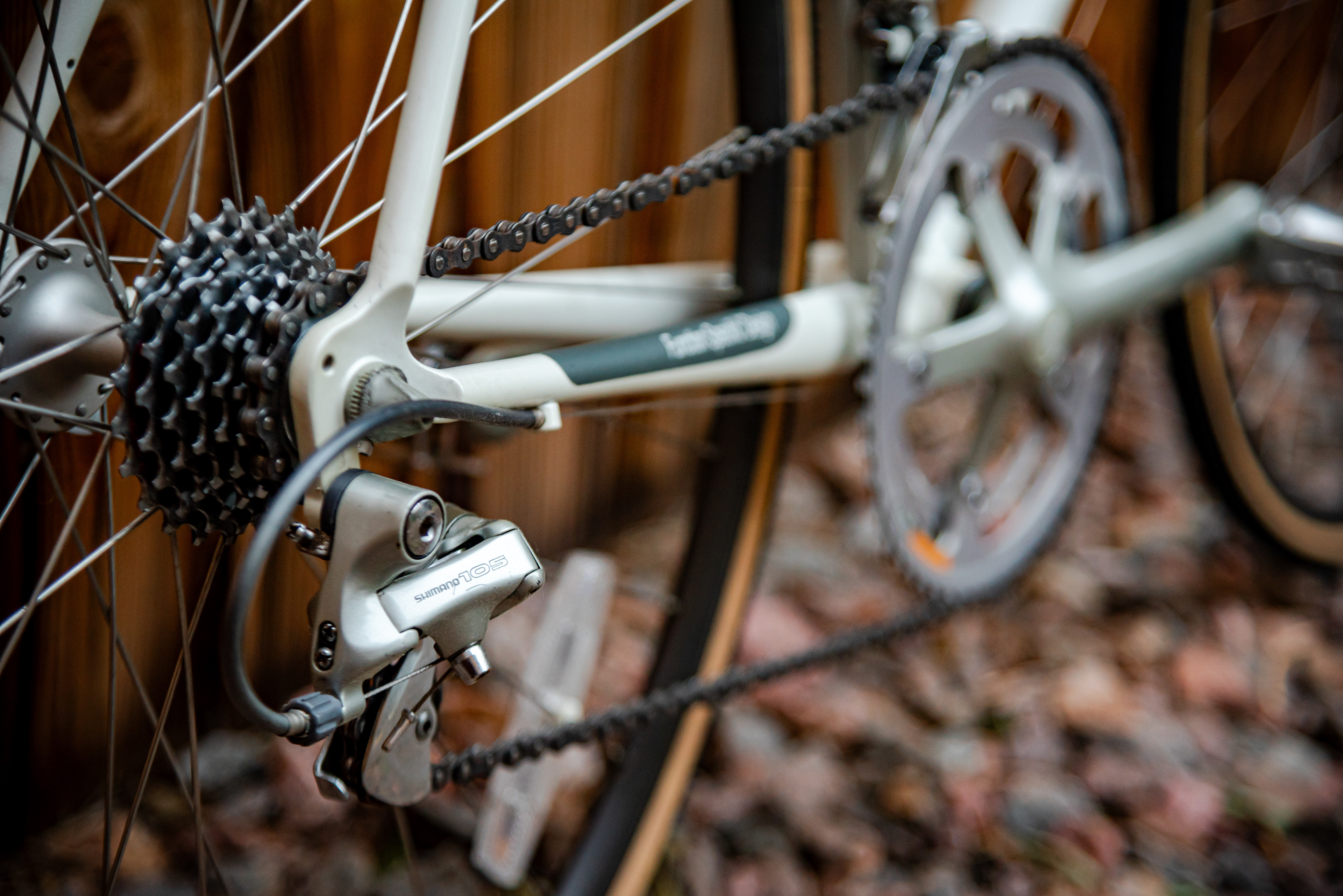

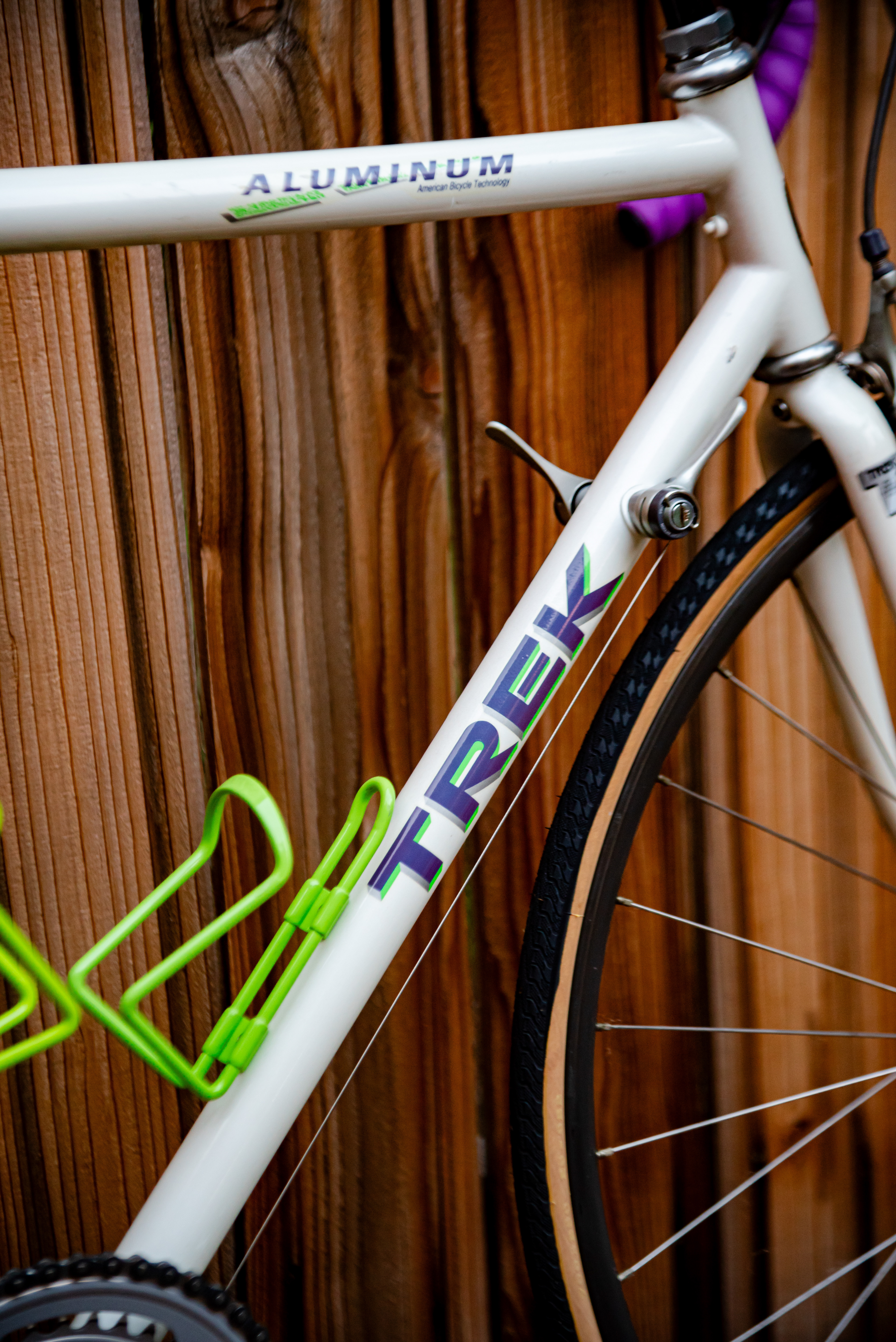
1989 Trek 830 Antelope
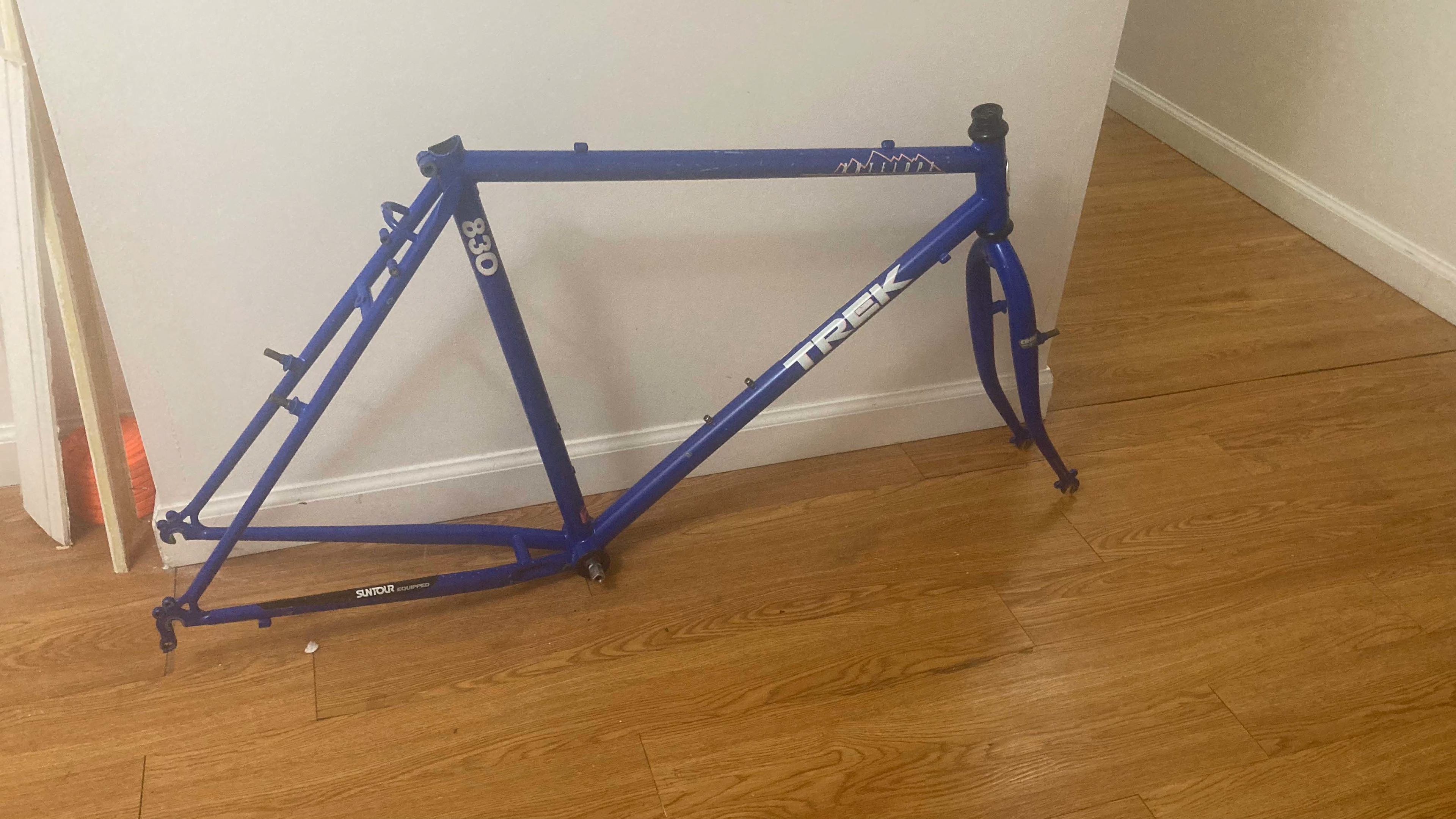

I came across my Trek 830 while browsing Craigslist in January 2023. Although it was not lugged, I was able to date it as a 1989 and find that it was a claimed brazed chromoly frame. It had been converted from a 3x7 drivetrain to a 1x8, making it a great commuter. The seller claimed that it was recently tuned up with new components and cable housings, but the images showed that it was completed using an unusual color combination, and that it had been sitting outside. Regardless, the livery was interesting: an intense blue with white decals on a pink background. Unfortunately, I did not take any pictures after purchasing the bike.
After purchasing the bike, I brought it home and discovered that it was in worse condition than I had anticipated. The non-drive side had been sun-stained so severely that the pink decals had faded to white; there were a lot of deep scratches on the frame, revealing the base coats and some bare metal; and there was a mysterious white speckle pattern on most of the frame, likely overspray from a rattle can. Despite these flaws, the bike rode well, so I decided to tear into it.
I stripped all of the components down and brought it down to the bare frame. I lightly wet-sanded all of the surfaces with water and green Scotch-Brite to remove the white overspray. The frame and fork were then masked off and sprayed with a clear coat to preserve the existing paint - although there were deep scratches revealing the base coat, I decided that it would be better to preserve the original paint than to spray over it. The handlebars were swapped out for those on my 1989 Trek 950, which had more rise (more comfortable for a commuting seating position). The handlebars and the stem were media-blasted to remove all paint and rust from the surface. The stem was re-painted black to restore the deep contrast with the blue frame; the handlebars were carefully handled, cleaned, and clear-coated over the raw media-blasted surface. I liked the texture, and the silver provided a more modern contrast to the black stem.
The drivetrain components were deep-cleaned, greased, and reassembled onto the frame, along with the brakes. The chain was particularly dirty and oxidized, so I decided to attempt to nickel plate it. Although the first attempt was unsuccessful, the bubbles managed to break free a lot of the stubborn grime. I scrubbed it and dunked it again with moderately successful results. In order to accent the pink decals which had faded on the non-drive side, I replaced all of the cable housings with a matching pink color. All of the shifting/brake cables were replaced with stainless steel cables to keep all of the actuation smooth over the years. The black/red grips and the anodized red bottle cage were discarded to avoid clashing with the color scheme. The grips were replaced by new ODI lock-ons with a pattern taken from Vans shoes - these are comfortable, grippy, and also nod to the emergence of skateboarding contemporary with the bike when it was new. Although the tires were old, they were a classic WTB Velociraptor matching set, so I decided to leave them untouched.

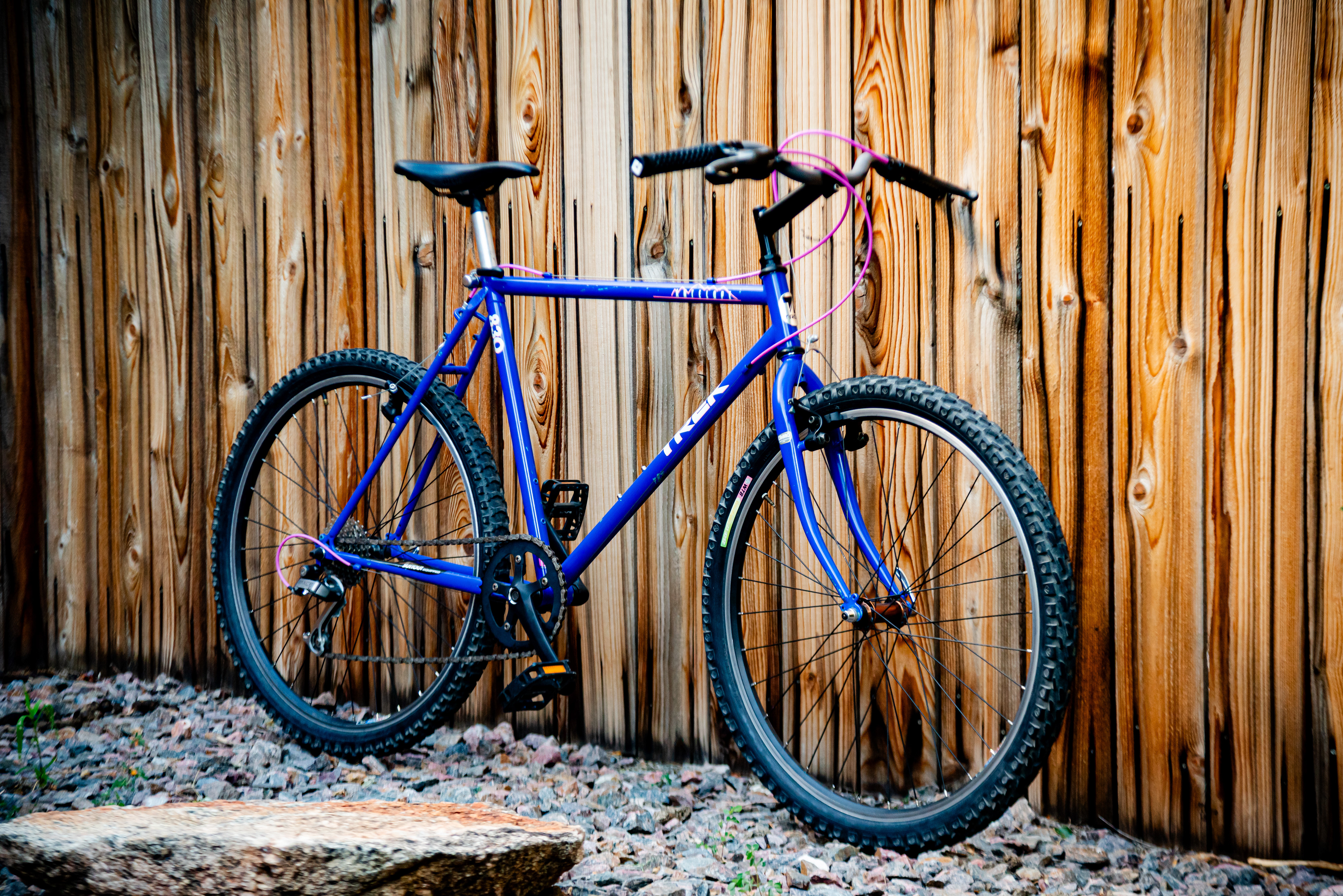

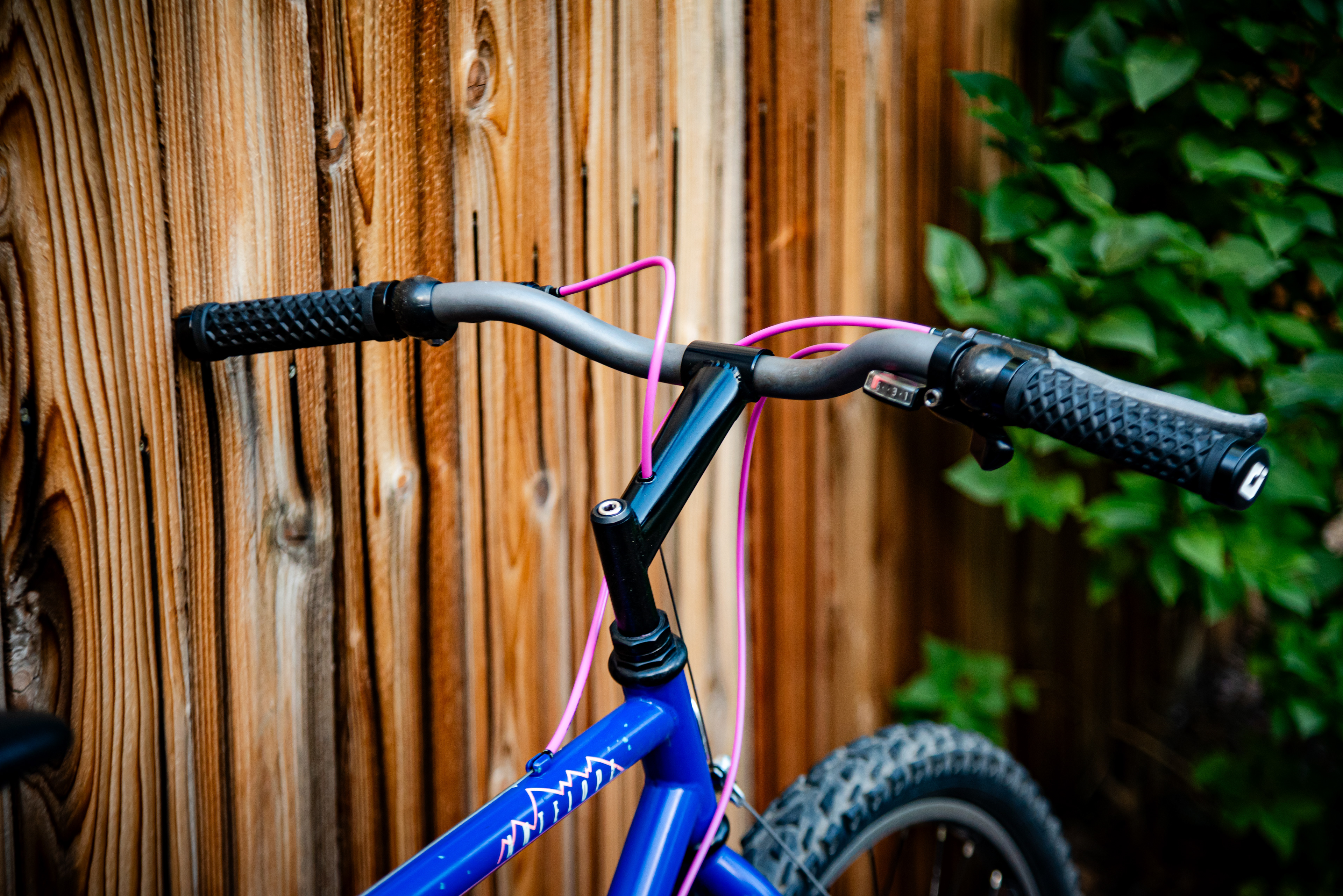
1991 Bridgestone MB-3
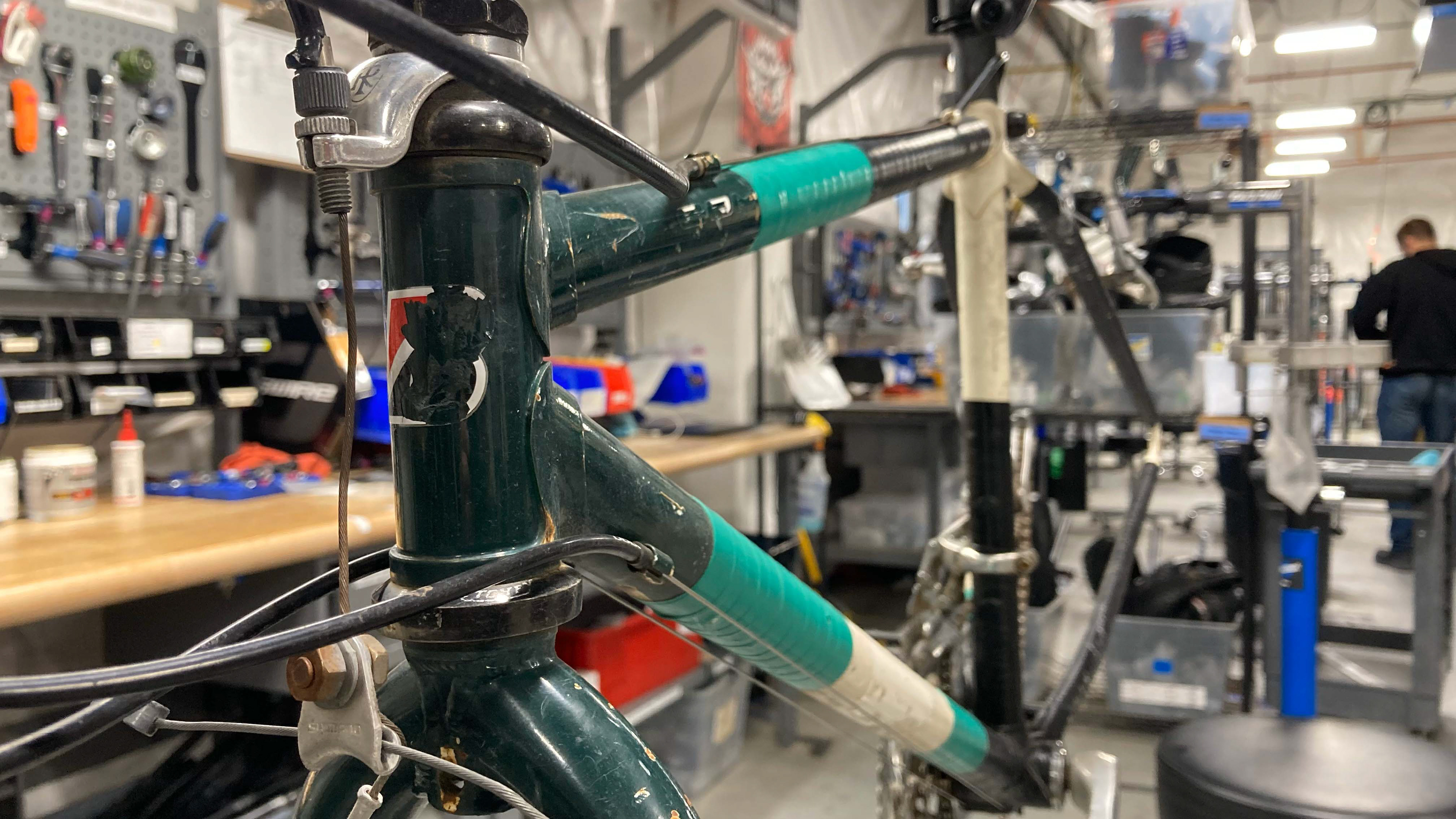
As-received
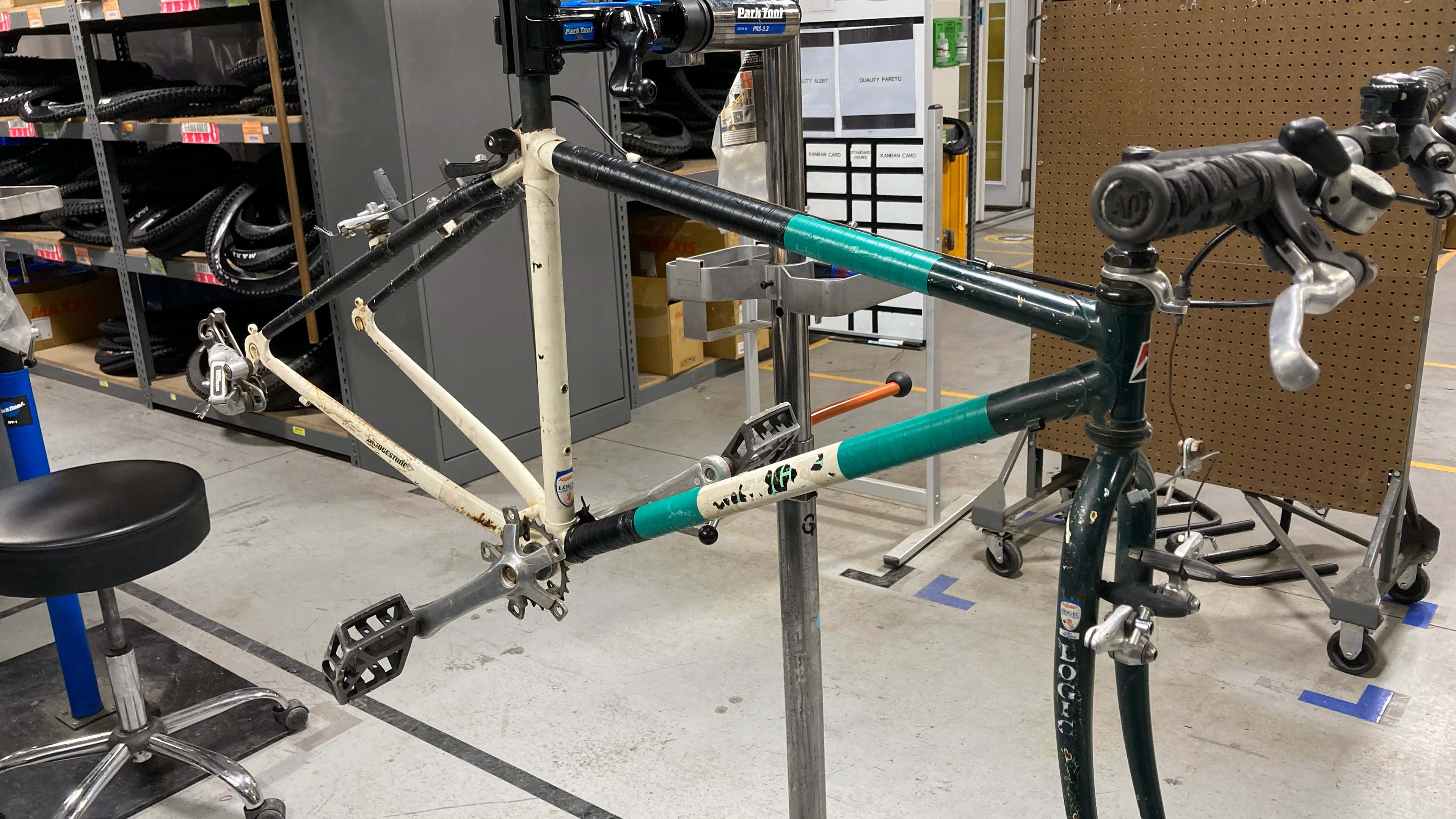
As-received

1991 Bridgestone Catalog
Bridgestone is most well-known for manufacturing tires, but there was a time when they also made bicycles. Sheldon Brown's website has a great write-up on the history of the brand, and despite their low popularity, the designs were actually very progressive. I was browsing the market throughout the winter and found an ad which listed a Bridgestone mountain bike, missing the wheels, sold as-is. The paint was faded, the decals were peeling, and the entire frame was covered in electrical tape for style. However, further inspection of the pictures revealed that the frame was lugged, indicating that it was one of the higher-end models made in Japan (as opposed to Taiwan). After browsing through old Bridgestone bike catalogs and comparing the paint scheme and components, I identified it as a 1991 Bridgestone MB-3. I contacted the seller and negotiated the price down considering the condition it was in.
Given the condition, I decided to make this a full restoration and conversion into a gravel bike. The bike is still in the early stages of restoration, but updates will be posted after completion.